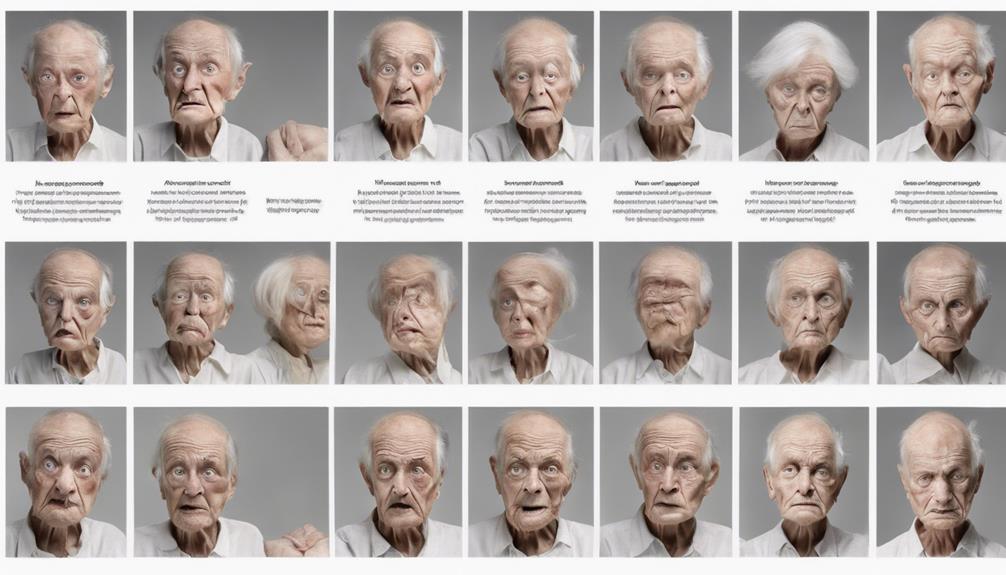In the world of navigating end-of-life situations, there is a well-known phrase, ‘It takes a village.’ This sentiment holds especially true in the realm of hospice care, where a multidisciplinary team collaborates to provide assistance and solace during a crucial period.
But have you ever wondered about the specific tasks and services that this specialized care provides? Let's explore the intricate web of services and support that hospice care encompasses, shedding light on the profound impact it has on individuals and their loved ones during a challenging period.
Key Takeaways
- Hospice provides essential medical, emotional, and spiritual care services.
- Hospice teams offer tailored support for pain management and emotional needs.
- Hospice services are available in diverse settings for patient comfort.
- Hospice emphasizes open communication, family involvement, and financial coverage options.
Services Provided by Hospice
At hospice, we offer a range of essential services to support individuals with terminal illnesses, providing medical care, nursing care, counseling support, and spiritual care with compassion and understanding. Our hospice services encompass a holistic approach to care, ensuring that individuals receive the support they need during this challenging time.
Medical care at hospice includes the provision of medications, medical equipment, and supplies necessary for the management of the terminal illness. Our nursing care team works diligently to monitor symptoms, provide comfort, and coordinate care with other healthcare providers to ensure comprehensive support for our patients. Counseling support is also a vital aspect of our services, offering emotional guidance and assistance to patients and their families as they navigate this difficult journey.
In addition to medical and nursing care, our hospice provides spiritual care, therapy services, dietary counseling, and respite care. These services aim to address the physical, emotional, and spiritual needs of individuals facing terminal illnesses, promoting comfort and quality of life throughout their journey.
Role of Hospice Care Team

As part of the hospice care team, we come together to provide comprehensive support to individuals with terminal illnesses, focusing on managing pain, addressing emotional needs, and offering specialized services tailored to each patient's unique requirements. Our interdisciplinary team is dedicated to ensuring that every aspect of a patient's well-being is taken into consideration during their end-of-life journey.
- Holistic Care Approach: We collaborate as a team to address not only the physical symptoms but also the emotional and spiritual needs of the patients. This holistic approach ensures that individuals receive comprehensive care that supports their overall well-being.
- Grief Support Services: Our team offers grief support to the loved ones of patients, aiding them in navigating the complex emotions that arise during the loss and bereavement process. We're here to provide comfort and guidance during this challenging time.
- Specialized Services: In addition to pain management and emotional support, our team includes specialists such as hospice aides, therapists, and trained volunteers who offer a range of services tailored to meet the unique needs of each individual under our care.
Locations for Hospice Services
In our provision of hospice services, we prioritize creating environments that foster comfort and familiarity for patients facing end-of-life journeys. Hospice care can be provided in various settings, including homes, nursing homes, assisted-living facilities, in-patient facilities, group homes, and hospitals. These diverse locations ensure that individuals can receive compassionate care tailored to their needs and preferences.
Whether a patient chooses to stay in the familiarity of their own home or receive care in a specialized facility, the goal remains the same: to enhance their quality of life and provide comfort during this challenging time.
Our hospice teams are adept at delivering comprehensive support in different environments, guaranteeing that patients and their families receive the necessary assistance and emotional guidance. By offering hospice services in multiple locations, we aim to ensure that individuals have access to the care they require while being surrounded by the comforts and familiarity they cherish.
Communication With Family Members

How can hospice facilitate meaningful and compassionate communication with family members during this challenging time?
As part of the care team, we prioritize open and honest discussions to ensure that family members are well-informed and supported throughout the end-of-life care journey. Here are three ways hospice fosters effective communication:
- Providing Regular Updates: Family members are kept informed about the patient's condition, treatment plan, and decisions regarding end-of-life care. This transparency helps them understand what to expect and how to best support their loved one.
- Offering Guidance and Support: Hospice assists families in navigating difficult conversations by offering resources, guidance, and emotional support. Coping with a loved one's terminal illness can be overwhelming, and having access to these tools can help alleviate some of the burden.
- Including Families in Decision-Making: We ensure that family members are involved in decision-making processes, empowering them to participate in creating a care plan that aligns with their loved one's wishes. This involvement helps families feel supported and valued during this challenging time.
Financial Aspects of Hospice Care
Navigating the emotional landscape of end-of-life care can be overwhelming for families, and understanding the financial aspects of hospice care can provide much-needed reassurance during this challenging time.
Hospice care is typically covered by Medicare, Medicaid, and most private insurance providers, ensuring that patients have access to the necessary services without high out-of-pocket costs. Medicare, for instance, covers all hospice services related to the terminal illness, relieving patients of financial burdens during this sensitive period.
While Medicaid benefits for hospice care vary by state, most states offer coverage for these essential services. Veterans can also access hospice care through the Veterans Affairs (VA) system, which provides comprehensive end-of-life support.
Frequently Asked Questions
What Happens When Someone Is in Hospice?
When someone is in hospice, our focus shifts to providing comfort, dignity, and quality of life in the final stages of a terminal illness. Patients receive symptom management, pain relief, and emotional support from our team of healthcare professionals.
We ensure that their wishes and goals are respected and honored throughout their end-of-life journey. Family members and caregivers also receive support, assistance, education, and bereavement services as we strive to provide personalized and compassionate care.
What Does It Mean When a Person Is Put on Hospice?
When someone is put on hospice, it means they have a life expectancy of 6 months or less. This shift focuses on comfort and quality of life, rather than curative treatments.
Hospice care aims to manage symptoms, offer emotional support, and enhance well-being. Patients on hospice receive specialized care from a healthcare team, providing services at home, nursing homes, hospitals, or hospice centers.
It's about ensuring comfort and dignity during a difficult time.
What Are 3 Disadvantages of Hospice?
We understand that choosing hospice care can be a difficult decision. Some challenges patients may face include limitations on curative treatments, emotional distress due to end-of-life discussions, and feelings of isolation during comfort-focused care.
It's crucial to provide support and understanding during this time. Our compassionate team acknowledges these disadvantages and works to address them with empathy and care.
Let's navigate these challenges together to ensure comfort and peace for all involved.
What Are the Four Stages of Hospice?
The four stages of hospice care are essential for meeting varying needs. Routine home care offers regular visits, while continuous home care provides intensive support during crises.
General inpatient care is crucial for complex symptom management, and respite care gives caregivers temporary relief. Each stage focuses on enhancing comfort and quality of life for patients and their families.
These stages represent our commitment to compassionate care tailored to individual needs.
Conclusion
As we journey through life, hospice acts as a guiding light, offering comfort, support, and compassion during our final moments.
Like a gentle breeze on a warm summer day, hospice care provides a sense of peace and solace to both individuals facing the end of life and their loved ones.
Let hospice be the soothing melody that accompanies you on this difficult but important path.









